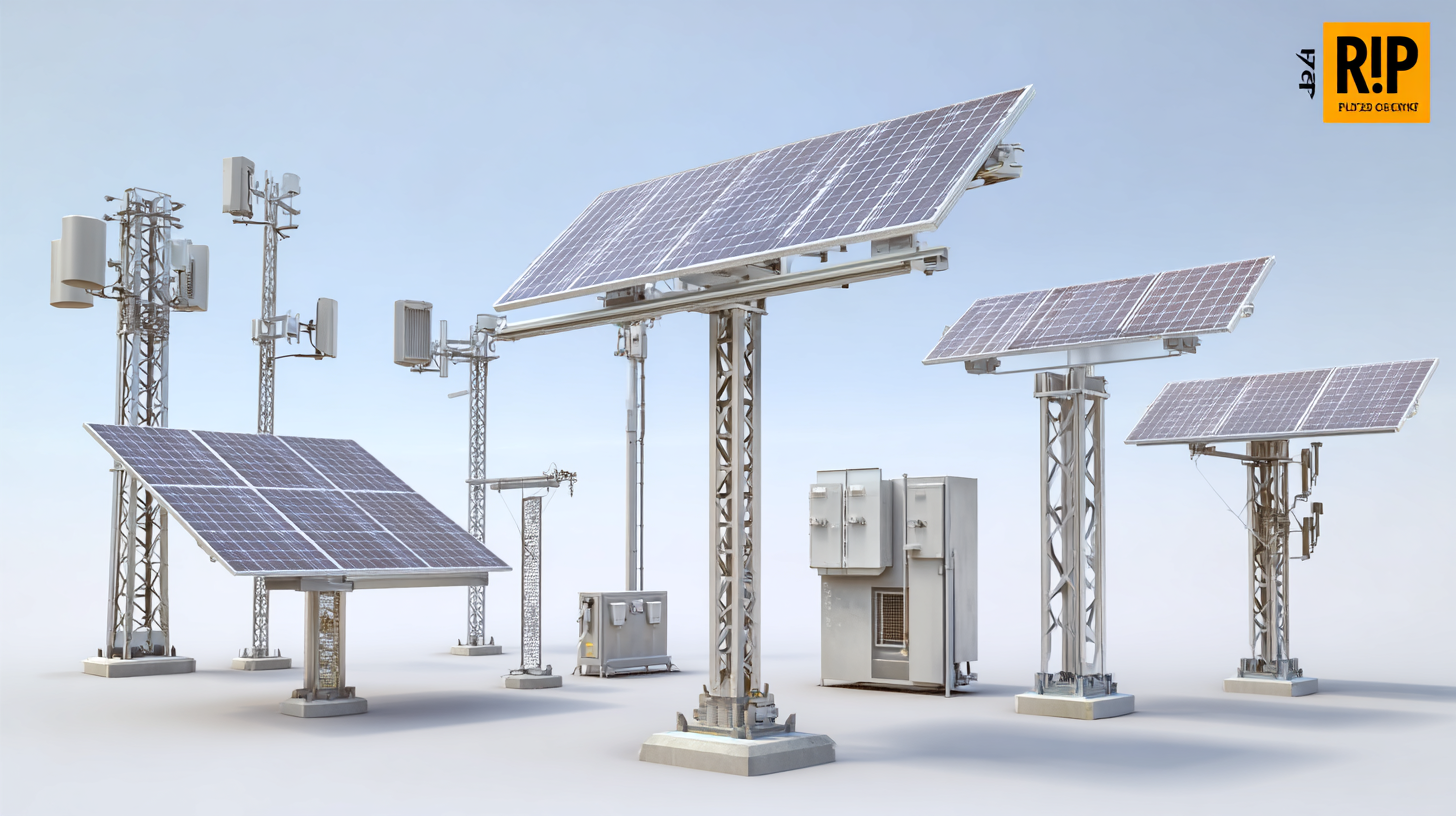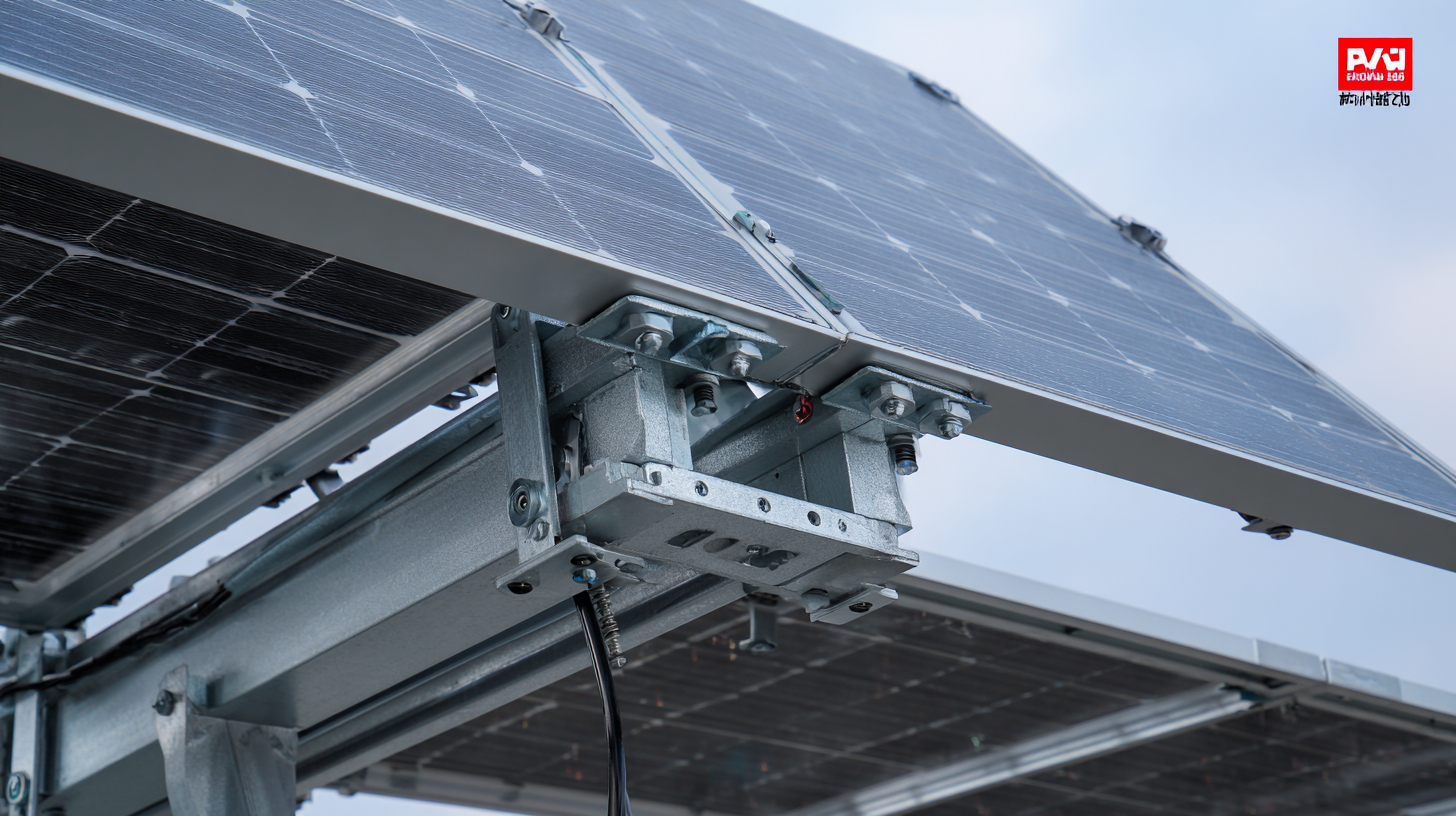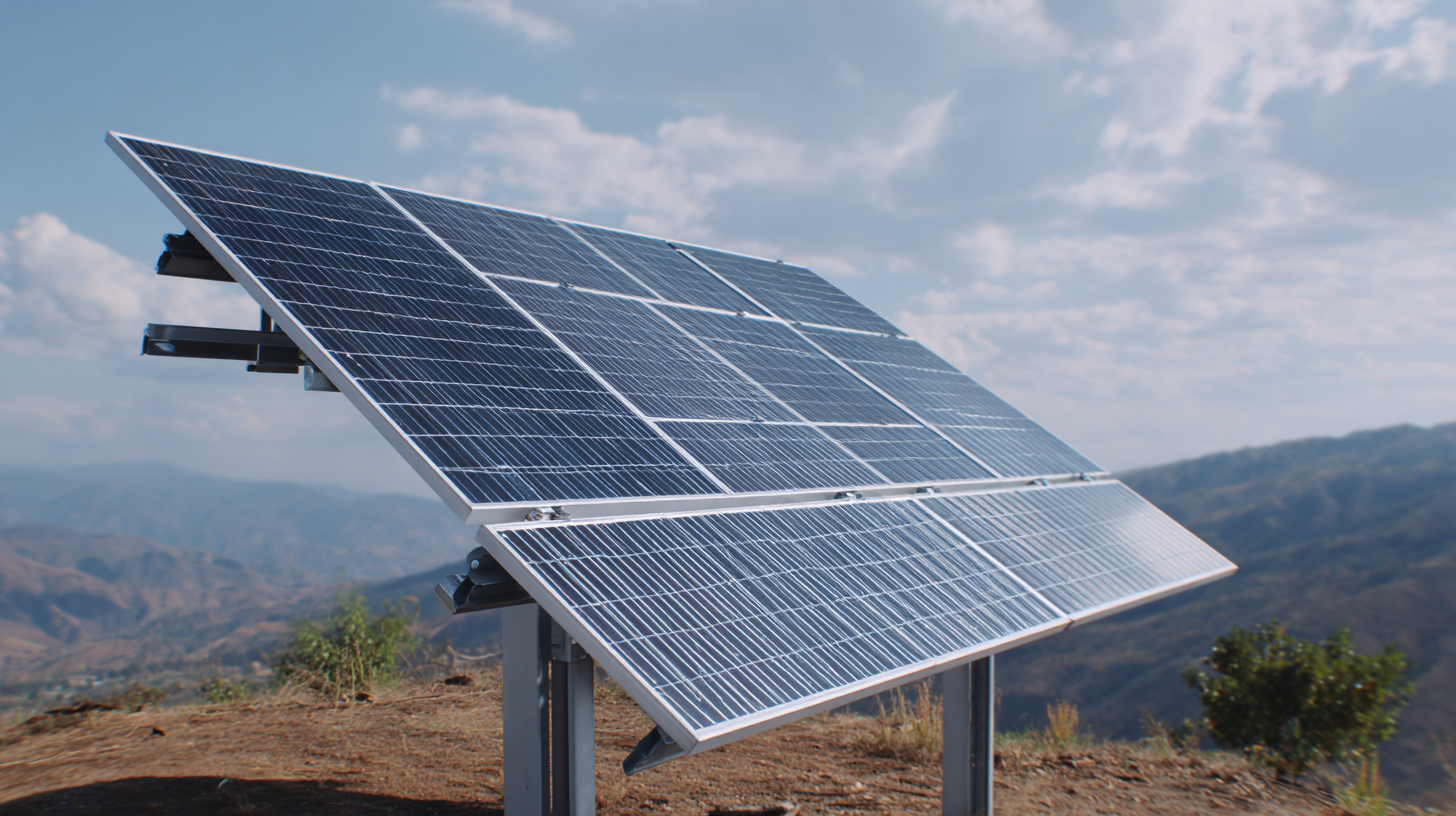As the demand for renewable energy continues to rise, the importance of an efficient Solar Panel Mounting System becomes increasingly evident. These systems play a critical role in maximizing the performance and longevity of solar panels by securely positioning them for optimal sunlight exposure. With various alternatives available on the market, it is crucial to explore the features and applications of different mounting solutions, ranging from fixed racks to adjustable and tracking systems. Each type of mounting system has its own unique advantages, suited to different types of installations and environmental conditions. In this blog, we will delve into the various alternatives, helping you understand how to choose the right Solar Panel Mounting System that aligns with your specific energy needs and site requirements, ultimately paving the way for a more sustainable future.

When selecting the right solar panel mounting system, it's essential to understand the different types available. The most common options include
rooftop mounts,
ground mounts, and
pole mounts.
Rooftop mounts are ideal for residential installations, offering a space-efficient solution that blends seamlessly with existing structures.
 Ground mounts, on the other hand, provide flexibility in positioning and can capture maximum sunlight, making them suitable for larger installations or properties with ample land.
Pole mounts, which elevate solar panels to optimize exposure, are especially useful in areas prone to shading or obstructions.
Ground mounts, on the other hand, provide flexibility in positioning and can capture maximum sunlight, making them suitable for larger installations or properties with ample land.
Pole mounts, which elevate solar panels to optimize exposure, are especially useful in areas prone to shading or obstructions.
The choice of mounting system not only affects the installation process but also influences the overall efficiency and performance of the solar energy system.
Best practices for metal roof solar mounting have emerged, particularly as more agricultural and industrial facilities adopt solar solutions.
Using compatible mounting hardware reduces potential leaks and enhances durability. As urban areas increasingly turn to solar solutions, understanding the environmental impact of different mounting systems aids homeowners and businesses in making informed decisions while maximizing their solar investments.
When selecting a solar panel mounting system, several key features must be evaluated to ensure optimal performance and investment return. First, the material of the mounting system plays a crucial role; aluminum and galvanized steel are popular choices due to their durability and corrosion resistance. According to a report by the National Renewable Energy Laboratory (NREL), systems that use high-quality materials can extend their lifespan significantly, reducing the frequency of replacements and repairs by approximately 25%.
Next, consider the mounting type, which includes fixed, adjustable, and tracking systems. Fixed mounts are the most common and cost-effective, while adjustable and tracking systems can yield significantly higher energy production, with reports indicating a potential increase of up to 30% in energy capture. This increase can be vital, especially for commercial installations, where efficiency translates directly to cost savings. Additionally, the ease of installation and aesthetics should not be overlooked, as these factors can impact both upfront costs and long-term satisfaction with the solar investment.
This chart illustrates the cost comparison of various solar panel mounting systems. Understanding the costs associated with each system is essential for selecting the most appropriate option for your solar energy needs.
When considering solar panel mounting systems, assessing your location is crucial to selecting the most effective solution. The orientation and tilt of the solar panels directly affect their efficiency, so understanding the solar path in your area can help maximize energy production. Factors such as local climate, potential shading from nearby trees or buildings, and seasonal variations in sunlight are all important considerations. Use solar path charts or apps to visualize the sun's trajectory throughout the year, ensuring your system captures ample sunlight.
Additionally, the type of mounting system you choose—ground-mounted, roof-mounted, or pole-mounted—depends on the space available and your property’s characteristics. Ground-mounted systems are ideal for open spaces with minimal obstructions, while roof-mounted solutions are suitable for urban environments with limited ground space. Furthermore, local building codes and regulations may influence your choice, requiring permits or specific installation techniques. Analyzing these elements will guide you in selecting the right solar panel mounting solution that complements your location and maximizes your investment in renewable energy.
| Mounting System Type | Features | Applications | Installation Cost ($) | Ideal Location |
|---|---|---|---|---|
| Fixed Rack | Simple design, cost-effective | Residential rooftops, commercial | 300 - 800 | Flat roofs, open ground |
| Pole Mount | Adjustable angle, good for uneven terrain | Rural areas, farms | 500 - 1200 | Open fields, hilly locations |
| Tracking System | Follows sun movement, increases output | Large scale solar farms | 1500 - 3000 | Sunny regions, open lands |
| Ballasted Mounting | No roof penetration, quick installation | Commercial rooftops | 400 - 900 | Flat roofs with sufficient load capacity |
| Ground Mount | Versatile, optimal angle adjustment | Residential, commercial gardens | 500 - 1500 | Spacious ground areas |
When considering a solar panel installation, choosing the right mounting system is crucial for maximizing energy output. Fixed mounting systems are the most common and cost-effective option, often preferred for their simplicity and reliability. They are designed to be stationary, usually set at a specific angle that is optimal for energy production in a given region. According to the National Renewable Energy Laboratory (NREL), fixed systems can achieve efficiency levels of around 80% of their theoretical maximum, making them a solid choice for many residential applications.

Adjustable mounting systems offer versatility by allowing the angle of the panels to be modified throughout the year. This flexibility can enhance energy production by capturing sunlight more effectively across different seasons. Reports from the Solar Energy Industries Association (SEIA) show that adjustable systems can increase solar energy generation by approximately 10-15% compared to fixed systems, depending on geographical location and seasonal sun path.
Tracking mounting systems take adaptability a step further by moving the panels to follow the sun's trajectory. While they tend to be more expensive to install and maintain, studies indicate that tracking systems can boost energy output by 20-40%. For those considering this option, it’s essential to assess the local climate, available space, and budget.
Tips: When selecting a mounting system, consider the average sunlight hours in your area, the initial investment versus long-term gains, and whether maintenance demands fit your lifestyle. Additionally, do not overlook local regulations and building codes, which may influence your choice of mounting systems.
When considering the performance of solar panel mounting systems, the quality of manufacturing stands out as a pivotal factor. High-quality mounting systems not only ensure the stability and longevity of the solar panels but also contribute to the overall efficiency of solar energy production. According to the 2024 Solar Photovoltaic Industry Research Report, while standard solar panels have an average lifespan of around 25 years, many begin to lose efficiency within just 6 years. This highlights the importance of selecting Tier 1 solar panels and robust mounting systems to guarantee optimal performance over time.
The choice of a mounting system greatly impacts how well solar panels can withstand environmental stresses. Quality manufacturing processes lead to improved durability and corrosion resistance, which are critical in maintaining the structural integrity of the installation. This is particularly relevant in regions with harsh weather conditions, where subpar components can lead to premature failure, affecting both the energy yield and cost-effectiveness of solar energy systems.
Investing in well-manufactured mounting systems is essential for maximizing long-term performance and return on investment in solar energy solutions.
